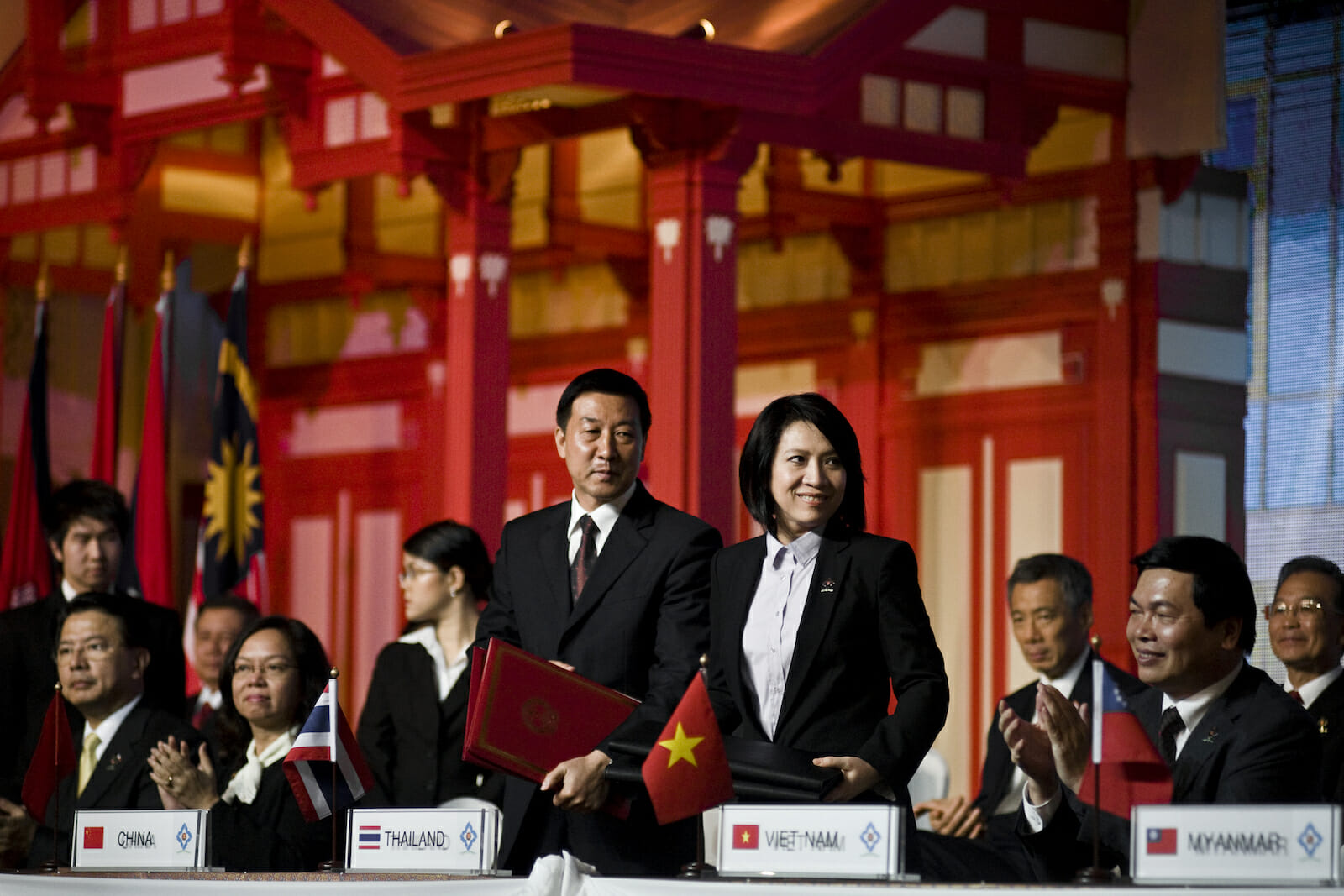
ASEAN Economic Integration: Opportunities and Challenges that Lie Ahead
The Association of Southeast Asian (ASEAN) leaders adopted the ASEAN Vision 2020 hoping to strengthen the foundation for a prosperous and peaceful community of Southeast Asian nations while creating a community that lived in shared stability and prosperity. The purpose of establishing an integrated economic community is to accelerate economic growth, enhance trade development in the region, and allow the freer movement of goods, services, skilled labor, and capital.
There are approximately 600 million people across the ten ASEAN member countries (Brunei Darussalam, Cambodia, Indonesia, Laos, Malaysia, Myanmar, Philippines, Singapore, Thailand, and Vietnam) that will be affected by this regional partnership. Thus, it is critical to highlight some high level opportunities as well as challenges surrounding the impending economic integration.
Background
The 1997 Asian financial crisis generated substantial macroeconomic fundamental effects, including a collapse of Asian stock markets, devaluations of domestic currencies, and a reduction in asset prices throughout Asian countries. Many businesses collapsed which in turn condensed per capita income for millions of people in the region.
Some experts argue that the Asian financial crisis exposed many issues such as banks’ structural inefficiencies, weak financial infrastructures, lack of transparency and weak governance and regulation involving the banking sector. Others argue that moral hazard, asymmetric information, short-sighted government policies, weak institutions, and ineffective regulation also made the region vulnerable to the crisis.
In the years that followed the Asian Financial crisis, ASEAN leaders discussed creating economic policies that would both support economic growth and protect the region from any potential future economic shocks. Consequently, the ASEAN Economic Community emerged as an apparatus for meeting these needs.
Opportunities
As a region, ASEAN has dramatically outpaced the rest of the world in growth of GDP per capita since the late 1970s. Income growth has remained strong since 2000, with average annual real gains of more than 5 percent. According to a study by McKinsey, in the year 2000, 14 percent of the region’s population was living below the international poverty line of $1.25 a day (calculated in purchasing-power-parity terms), but by 2013, that share had fallen to just 3 percent.
Already several million households in ASEAN countries have incomes that allow them to make significant discretionary purchases. That number could reach 125 million households by 2025, making ASEAN an important consumer market.
There is a substantial list of opportunities associated with AEC integration. For instance, economic integration provides opportunities to boost economic stability in the region. Another benefit is that integration would turn ASEAN into a more competitive region within the world economy. A stronger regional economy will help to improve the living standards of the ASEAN population by reducing poverty through economic development.
ASEAN member countries expect to achieve greater economic cooperation in the areas of financial policies, trade, and human capital. AEC integration will also serve to promote goods and services, investment, labor mobilization, and mobilization of capital. The ASEAN region could potentially become a highly competitive economic union operating as a single market. ASEAN also intends to improve regional agricultural and industrial utilization, as well as expand trade, and improve transportation and infrastructure.
Labor-force expansion and productivity improvements have driven GDP growth in the ASEAN region. ASEAN has the third-largest labor force in the globe, behind China and India. The ASEAN region is projected to rank as the fourth-largest economy in the world by the year 2050.
Economic growth and expansion in trade have yielded tangible benefits to Southeast Asia’s people. In 2012, ASEAN’s GDP per capita reached $3,748, more than double the year 2000 figure of $1,172. Over the last ten years, poverty levels across the region have decreased. The Nation reported that in Cambodia, Laos, Myanmar, and Vietnam, the proportion of the population living on less than $1.25 a day fell to 16 percent in 2010, from 45 percent in 2000. However, it is important to highlight that there are structural and institutional differences across the 10 member ASEAN countries, and consequently, these countries can be expected to have different levels of economic growth and subsequent economic development.
Challenges
Economic integration could potentially combine to produce opportunities to ASEAN countries; however, it could also generate challenges, namely higher costs related to implementing economic integration across such economically and culturally diverse countries.
ASEAN is an economic region which has diverse patterns of economic development. The majority of ASEAN countries are categorized as low middle income countries, whereas a few are positioned better economically. The existing income inequality gap among some of the ASEAN countries could become even wider post AEC integration.
Some ASEAN countries have high inflation rates. This could result in dissimilar price levels and unequal purchasing power across ASEAN member countries, giving some countries the ability to purchase more goods of another member country. Also, different levels of inflation could result in different levels of investment. This could inadvertently lead to some sectors and industries incurring economic losses and to some workers in the less economically stable countries to consider migrating to more economically prosperous member countries. Many of the ASEAN economies are currently in vastly different stages of development, with large differences between high-saving economies, such as Brunei, Malaysia, and Singapore, and low-saving economies, such as Cambodia, Laos, and the Philippines.
There is the possibility of witnessing highly disparate levels of economic development, interest rates, and exchange rates across member countries. As a result, governments could face some challenges in stabilizing macroeconomic and financial conditions under an integrated economic system.
There is also a high degree of political and socio-cultural diversity among ASEAN countries which makes economic integration challenging. ASEAN member countries have disparate existing levels of capital market development and financial regulations. Some of the ASEAN member countries do not have the appropriate financial sector regulation and infrastructure necessary for a seamless integration process. We can expect that there will be challenges associated with capital market development, financial services liberalization, capital account liberalization, and an eventual ASEAN currency cooperation.
AEC will also incur costs related to institutional strengthening, costs related to monitoring and evaluating the regional systems within the economic framework, and costs related to developing and managing the regional systems necessary for an effective economic integration. One could also expect other costs to rise, such as those related to urbanization as millions of citizens migrate from rural areas to cities in search of economic opportunities. As most of the ASEAN member countries grow and expand their economic activities, there will be additional costs related to climate resiliency and environmental sustainability.
The ASEAN region sits at the intersection of global flows. Intraregional trade in goods is likely to increase with the implementation of AEC as is overall economic growth. To realize the full potential of the AEC, better management of structural and institutional change is needed, in addition to ensuring that economic gains lead to shared prosperity among the population. The success of ASEAN economic integration will depend on how it influences the labor market – and consequently on how it improves the quality of life of women and men in the region.
In order to take full advantage of economic growth, the region must develop its human capital and workforce skills, while addressing income inequality and gender inequality. In order for ASEAN to become more globally competitive in a wide range of sectors and industries, it must invest in institutions, infrastructure, education, on the-job-training, and in allowing women to participate more in the regional economy.
There are opportunities and challenges that surround AEC, including managing labor migration, boosting productivity and wages, and improving job quality. These items in turn will produce effects on job skills development, wages and productivity, and labor migration. However, it is important to emphasize that unless managed properly, the AEC may not be able to capitalize on all of the foreseeable economic opportunities, and instead it could witness an increase in income inequality across the region which would certainly affect the poorest.
